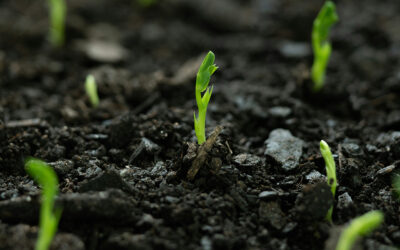Although modern agriculture has been instrumental to feeding the global population, the system is vulnerable to catastrophic risks, and unsustainable farming practices have undeniably taken a toll on the planet.
According to Juan García Martínez, a research manager at Alliance to Feed to Earth in Disasters (ALLFED), a nonprofit organization founded in 2017, converting inedible raw materials like straw, wood, or carbon dioxide into food has the potential to fulfil the nutritional and caloric requirements of the global population while making the global food supply more resilient by reducing our dependence solely on agricultural resources.
Although ALLFED’s main mission is to ensure food security in the event of large-scale disruptions, García Martínez emphasizes that non-agricultural food production systems are also useful beyond crisis scenarios. He says they could minimize or eliminate risks like trade restrictions, environmental degradation, extreme weather, climate changes, pathogens, and pests.
“They could also contribute to more sustainable, resilient food systems, reduce land use, reduce water consumption, and overfishing, and even provide food in extreme environments, like space missions or humanitarian efforts,” he added.
Given the growing number of people on the planet, more calories are also needed to go around, which traditional agriculture may struggle to fulfill. “As the global population grows, so does the need for sustainable, nutritious food — and that’s where non-agricultural, closed-environment production methods could come in,” he said.
Shifting the focus to resilient foods
If implemented on an industrial scale, non-agricultural food-production technologies could serve as a reliable back-up plan in the event of climate shocks, biological and environmental threats, trade disruptions, and extreme scenarios such as abrupt sunlight reduction from a volcanic winter or nuclear winter.
For example, wood and inedible plant residues can be turned into sugar, and petroleum and coal can be converted into fats and protein through well-established industrial processes like steam cracking and gasification. The facilities would not necessarily need to be built from scratch.
To save time and money, existing paper factories, sugarcane and corn refineries, and breweries could be repurposed to convert plant biomass into sugar, fats, and protein.
Calculations show that the world’s current sugar demand could be fulfilled within five months of a catastrophe by repurposing pulp and paper mills for lignocellulosic sugar production. Carbon dioxide, natural gas, and hydrocarbons — compounds made up of only carbon and hydrogen — could also play a role in resilient food production.
Turning gas into nutrients
While carbon dioxide may be a major source of the planet’s climate change woes, this virtually limitless resource can also be turned into protein, carbohydrates, and fat—the three macronutrients the body needs to thrive.
“Today, there are pioneering companies using CO2 to produce high-quality protein or butter substitutes and some have also used it to produce sugars,” García Martínez mentioned.
Protein made from gas fermentation by microorganisms like bacteria, yeast, algae, and fungi, is gaining traction, with several companies using CO2 to manufacture high-quality, “single-cell protein” alternatives to soy, dairy, meat, and eggs on small scales. Similarly, other companies have focused on producing single-cell protein from methane, a potent greenhouse gas.
These microbial protein powders could potentially be added to bread, pasta, and plant-based meat and dairy products, or used as a protein supplement, like whey powder. But cost is a major prohibitor.
“The processes that use CO2 from the air or from factories as a raw material to produce proteins, fats, and carbohydrates are disadvantaged at the moment in terms of cost due to the very high energy requirements of the process, but this could change in the future,” García Martínez said.
Singapore is already ahead of the game. “In Singapore, proteins made from CO2 are already commercialized because they’re interested in increasing their food sovereignty, and this provides a way to obtain food with their very limited land so they’re not entirely dependent on food exports,” said García Martínez.
Aside from protein, agriculture-free fats are also being produced from CO2 and hydrocarbons on small scales by some well-intended food manufacturers.
Synthesizing dietary fats from hydrocarbons has been estimated to produce around half the CO2 emissions that palm oil plantations produce, making this alternative much more sustainable from an environmental footprint perspective.
But the reality is that synthetic fats may never be cheaper than agricultural oils, dampening their marketability. Despite the compelling reasons to fast-track non-agricultural food production, social acceptance of the technologies might be an obstacle.
Convincing consumers
Although animal product alternatives and fermented foods aren’t new or exotic concepts, if given a choice, some people might be reluctant to adopt synthetic foods, regardless of the environmental benefits.
Beyond palatability, the new wave of resilient foods and technologies may also raise economical and ethical concerns, as the agricultural industry is still profitable to many, and an estimated one-quarter of the world’s workforce rely on agriculture for income.
García Martínez believes a balanced and cautious approach to introducing these foods is necessary and should be done in a way that complements agriculture.
“While many of these foods could significantly boost food resilience and sustainability, to ensure they’re beneficial, there should be more research on their health impacts, their economic effects on agricultural workers, and the justice of transitioning from traditional to industrial food processes requiring less labor,” he stated.
Reference: Juan B. García Martínez, Jeffray Behr, and David C. Denkenberger. Food without agriculture: Food from CO2, biomass and hydrocarbons to secure humanity’s food supply against global catastrophe, Trends in Food Science & Technology (2024). DOI: 10.1016/j.tifs.2024.104609
Feature image credit: Eric Prouzet on Unsplash

















